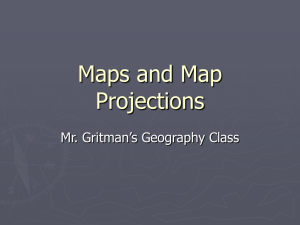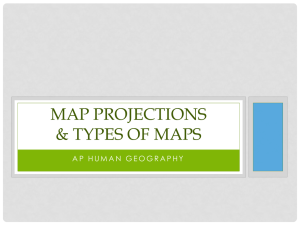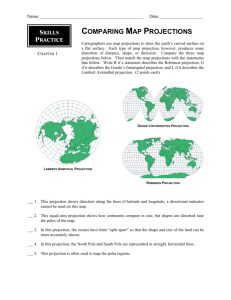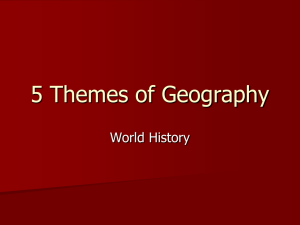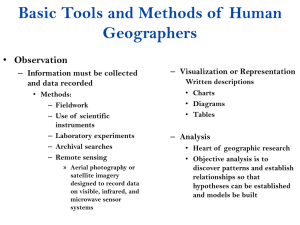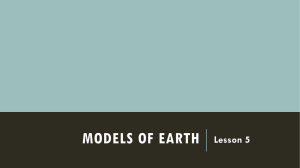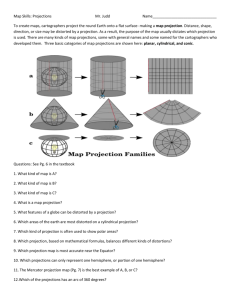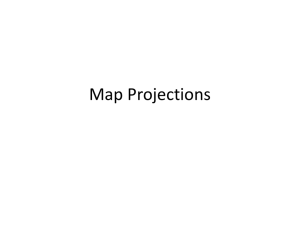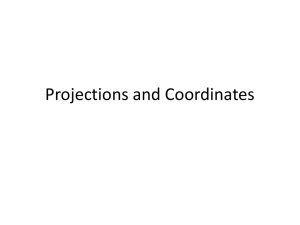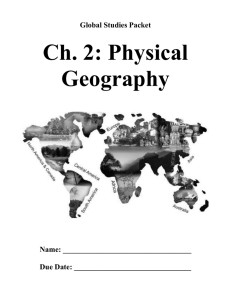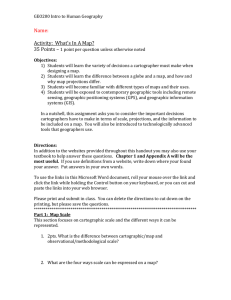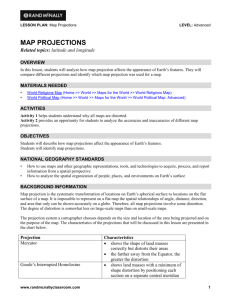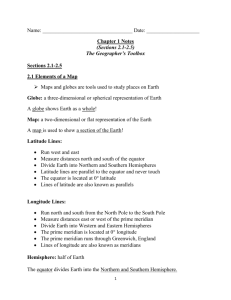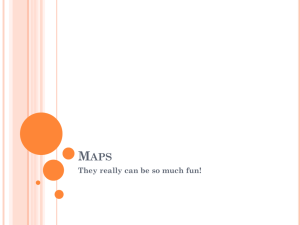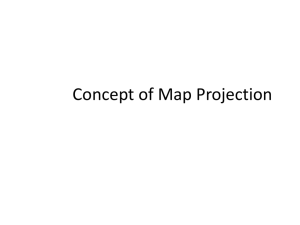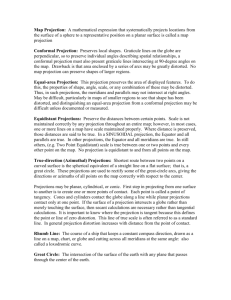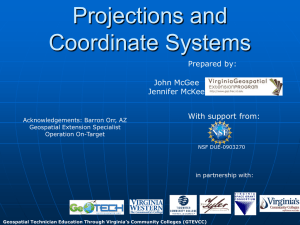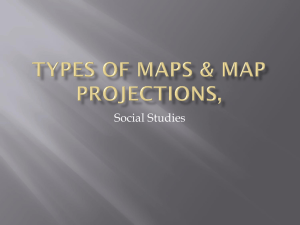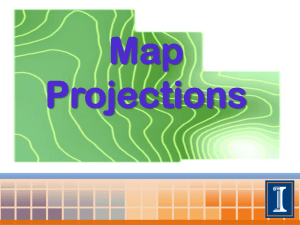GEOGRAPHY SKILLS 1 Understanding Projections
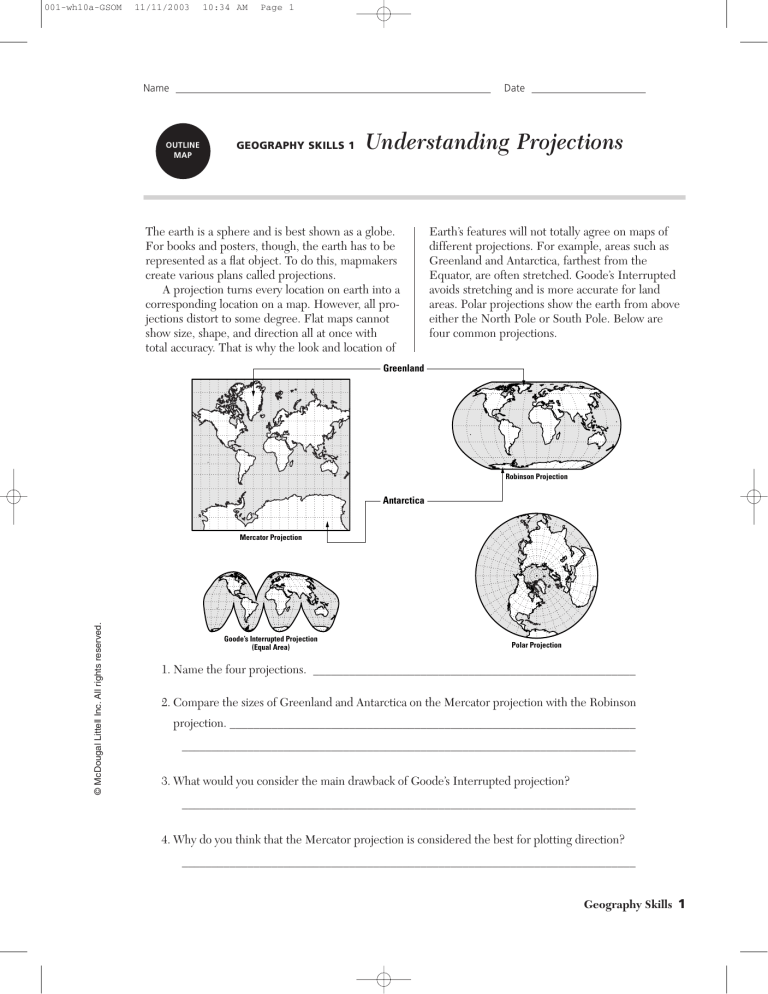
001-wh10a-GSOM 11/11/2003 10:34 AM Page 1
Name Date
OUTLINE
MAP
GEOGRAPHY SKILLS 1
Understanding Projections
The earth is a sphere and is best shown as a globe.
For books and posters, though, the earth has to be represented as a flat object. To do this, mapmakers create various plans called projections.
A projection turns every location on earth into a corresponding location on a map. However, all projections distort to some degree. Flat maps cannot show size, shape, and direction all at once with total accuracy. That is why the look and location of
Greenland
Earth’s features will not totally agree on maps of different projections. For example, areas such as
Greenland and Antarctica, farthest from the
Equator, are often stretched. Goode’s Interrupted avoids stretching and is more accurate for land areas. Polar projections show the earth from above either the North Pole or South Pole. Below are four common projections.
Robinson Projection
Antarctica
Mercator Projection
Goode’s Interrupted Projection
(Equal Area)
Polar Projection
1. Name the four projections. ______________________________________________________
2. Compare the sizes of Greenland and Antarctica on the Mercator projection with the Robinson projection. ____________________________________________________________________
____________________________________________________________________________
3. What would you consider the main drawback of Goode’s Interrupted projection?
____________________________________________________________________________
4. Why do you think that the Mercator projection is considered the best for plotting direction?
____________________________________________________________________________
Geography Skills 1
